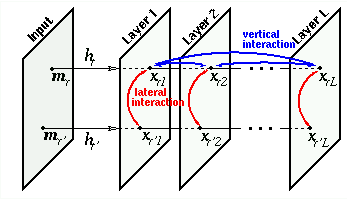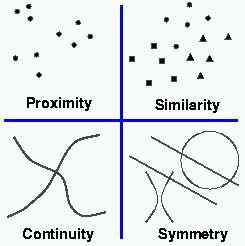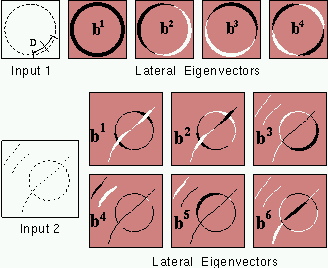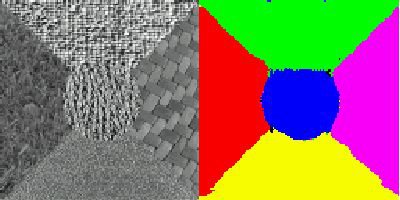





















Universität Bielefeld › Technische Fakultät › NI
Search
The Competitive Layer Model (CLM)

The Competitive Layer Model (CLM) is a recurrent neural network architecture for dynamic feature binding and relaxation labeling, which was introduced by Helge Ritter in 1990. It can be used for various tasks in perceptual grouping
Gestalt Laws

The CLM is motivated with evidence from psychological experiments dealing with visual perception. The so-called Gestalt theory claim, that visual perception must be viewed as an active process by which the visual information is interpreted and grouped according to a large number of rules. These Gestalt laws allow a phenomenological interpretation of the interactions between visual features that lead to the perception of composite objects. The CLM was shown to replicate some of the grouping tasks in various fields of application like MRI image segmentation, contour grouping of edge features or texture-based image segmentation
Theoretical Analysis of the CLM

We have proven criteria which ensure convergence of the recurrent dynamical network and the proper feature assignment to the neural layers. As we have shown , the attractors of the CLM provide also feasible solutions to relaxation labeling problems, a common approach in the pattern recognition community. The corresponding CLM energy function is similar to the quadratic energy function of Potts-Mean-Field (PMF) approaches to combinatorial optimization. An important difference is that the CLM is formulated as a piecewise linear system, and thus allows to use the tools of eigensubspace analysis for an inspection of the binding process. The eigenvectors with largest eigenvalues dominate the group formation process.
Application to Texture Segmentation

Texture perception plays a central role in the way we perceive our environment. To describe texture in terms of computational vision, we need to extract some sort of feature which resembles the textual appearance of an image region. Therefore, the question is: How do we represent textured images? A widely used model is the "Back Pocket Model" which texture perception researchers "routinely pull out from their back pocket". This model applies a set of linear filters which modell the response of cells found in the visual cortex of monkey and cat. This "Back Pocket Model" was used a basis to construct and fine-tune a system which extracts a texture description from images
- Login to post comments
